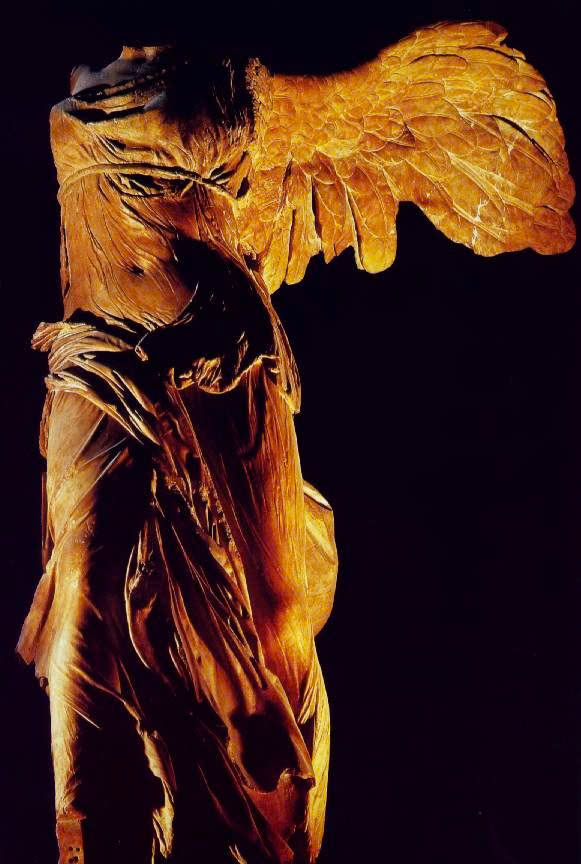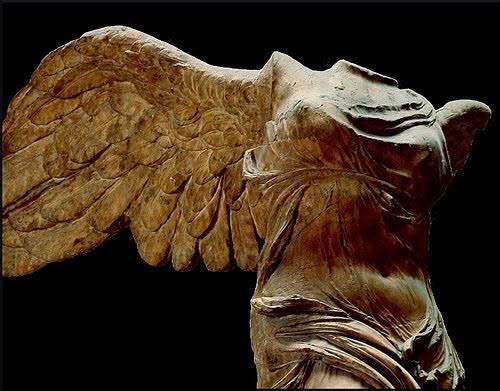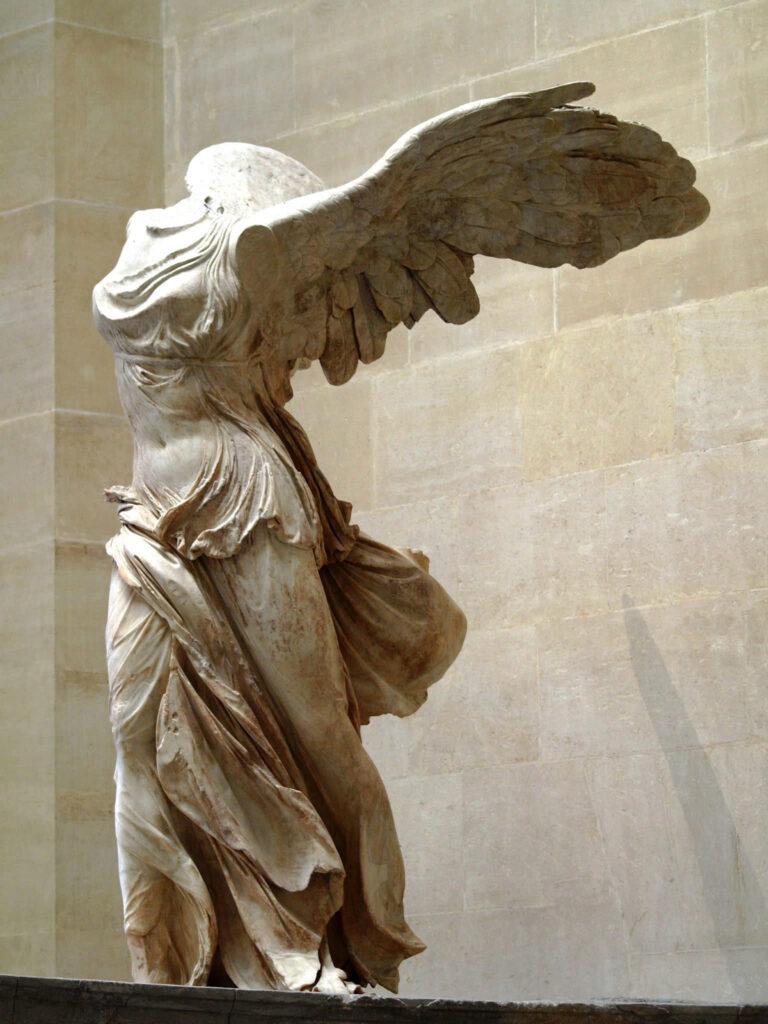The Winged Victory of Samothrace stands as an enduring testament to the brilliance of Hellenistic artistry, captivating viewers for over two millennia. This masterpiece, discovered in 1863, continues to inspire awe and wonder with its remarkable portrayal of triumph and divine grace.
The Discovery of an Ancient Marvel

In 1863, on the picturesque island of Samothrace in the northern Aegean Sea, archaeologist Charles Champoiseau made a discovery that would forever change the landscape of ancient art history. The unearthing of the Nike of Samothrace, a magnificent marble sculpture dating back approximately 2,200 years, revealed one of humanity’s greatest artistic achievements.
A Victory Frozen in Time
The Naval Triumph

The statue’s creation, while shrouded in mystery, is believed to commemorate a significant naval victory by Ptolemaic forces in the 2nd century BC. Standing proudly atop a base sculpted to resemble a ship’s prow, the statue embodies both the literal and metaphorical aspects of triumph at sea.
The Divine Portrayal

Despite missing its head and arms, the statue’s remaining form speaks volumes through its dynamic composition. The goddess Nike, captured in mid-descent from the heavens, exhibits a remarkable sense of movement through her wind-swept garments and powerful stance. The missing elements, rather than diminishing its impact, add an air of mystery that enhances the sculpture’s allure.
Artistic Mastery and Symbolism
The statue exemplifies the pinnacle of Hellenistic artistic achievement. Its most striking feature lies in the masterful depiction of movement – the goddess’s garments appear to dance in an eternal wind, while her outstretched wings suggest imminent flight. The intricate details of the drapery, combined with the dramatic pose, create an unprecedented sense of vitality and energy.
Technical Brilliance

The sculptor’s technical prowess is evident in every detail, from the delicate folds of Nike’s chiton to the powerful architecture of her wings. The artwork demonstrates the Hellenistic period’s commitment to emotional expression and technical precision, creating a piece that transcends its time.
The Modern Legacy
Today, the Nike of Samothrace holds a position of honor in Paris’s Louvre Museum, where it continues to mesmerize millions of visitors annually. Despite the ravages of time, the statue’s ability to convey strength, victory, and divine grace remains undiminished.
A Timeless Symbol

The Winged Victory of Samothrace represents more than just a masterpiece of ancient Greek sculpture – it embodies humanity’s eternal aspiration toward triumph and excellence. Through its powerful presence and artistic brilliance, it continues to inspire and remind us of art’s capacity to capture and preserve the most noble aspects of human achievement.

